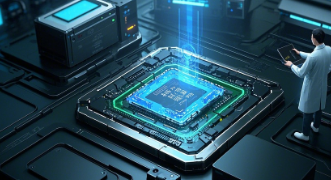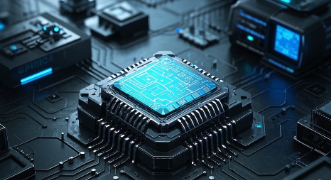Research Breakthrough: Revolutionary Memristor Chip Boosts Computing
Introduction
In the ever - evolving realm of computing, the pursuit of more efficient, powerful, and compact computational solutions is relentless. Recent research has led to a significant breakthrough with the development of a revolutionary memristor - based chip. Memristors, short for memory resistors, have long been a subject of intense study due to their unique electrical properties. This new chip, harnessing the potential of memristors, is set to redefine the boundaries of computing, offering enhanced performance, energy efficiency, and novel applications.
Understanding Memristors
Memristors were first theorized in 1971 by Leon Chua, a professor at the University of California, Berkeley. However, it was not until 2008 that the first physical memristor was fabricated by Hewlett - Packard Labs. Memristors are a fourth fundamental passive electrical component, alongside resistors, capacitors, and inductors. What sets memristors apart is their ability to remember the amount of electrical charge that has passed through them.
The Working Principle
A memristor's resistance changes based on the history of the electric current flowing through it. When a positive current is applied, the memristor's resistance decreases, and when a negative current is applied, the resistance increases. This change in resistance is non - volatile, meaning that it remains even after the power is turned off. In essence, a memristor can store information in the form of its resistance state, making it an ideal candidate for both memory and computing applications.
Comparison with Traditional Components
Traditional memory technologies, such as dynamic random - access memory (DRAM) and flash memory, have limitations. DRAM is volatile, requiring constant power to retain data, and has relatively low storage density. Flash memory, while non - volatile, has a limited number of write - erase cycles and relatively slow write speeds. Memristors, on the other hand, offer non - volatility, high storage density, and fast read and write speeds. In computing, traditional transistors used in central processing units (CPUs) are designed to perform binary operations. Memristors, with their continuous resistance states, can potentially perform more complex operations, leading to more efficient computing architectures.

The Development of the Memristor - Based Chip
The development of the memristor - based chip has been a result of years of research and technological advancements. Scientists and engineers have been working on overcoming the challenges associated with integrating memristors into a functional chip.
Fabrication Challenges
One of the major challenges in fabricating memristor - based chips is the precise control of the memristor's properties. The materials used in memristors, such as metal oxides, need to be carefully deposited and patterned to ensure consistent performance. Additionally, the integration of memristors with other components on a chip, such as transistors and interconnects, requires advanced manufacturing techniques. Researchers have been using techniques like atomic layer deposition and lithography to create high - quality memristors and integrate them into chip designs.
Circuit Design Innovations
To fully utilize the potential of memristors, new circuit design approaches have been developed. Instead of using traditional von Neumann architectures, where data is stored in memory and processed in a separate CPU, memristor - based chips can implement in - memory computing. In this approach, the memristors can perform both data storage and processing functions, reducing the need for data to be constantly transferred between memory and the CPU. This not only speeds up computing but also significantly reduces energy consumption. For example, neural network - inspired circuits can be designed using memristors, where the resistance states of the memristors can represent the synaptic weights in a neural network.
Applications of the Memristor - Based Chip
High - Performance Computing
In high - performance computing, the demand for faster and more energy - efficient processors is insatiable. The memristor - based chip has the potential to revolutionize this field. By enabling in - memory computing, these chips can perform complex calculations at a much faster rate. For example, in data - intensive applications such as weather forecasting, financial modeling, and scientific simulations, the ability to process large amounts of data quickly is crucial. Memristor - based chips can handle these tasks more efficiently, reducing the time required for calculations and enabling more accurate predictions.
Artificial Intelligence and Machine Learning
Artificial intelligence (AI) and machine learning (ML) are rapidly evolving fields that rely on massive amounts of data processing. Memristor - based chips are well - suited for AI and ML applications. Their ability to perform matrix multiplication, a fundamental operation in neural network calculations, in - memory can significantly accelerate the training and inference processes. This can lead to more powerful and efficient AI algorithms. For instance, in image recognition systems, memristor - based chips can process images faster and more accurately, enabling better object detection and classification.
Internet of Things (IoT)
The IoT is a network of interconnected devices that generate and transmit vast amounts of data. Energy efficiency is a critical factor in IoT devices, as many of them are battery - powered. Memristor - based chips can offer low - power computing solutions for IoT devices. Their non - volatile nature means that data can be stored without consuming power, and their in - memory computing capabilities can reduce the overall energy consumption of the device. This can extend the battery life of IoT sensors, wearables, and other devices, making the IoT more sustainable and practical.
The Future Outlook
The development of the memristor - based chip represents a significant step forward in computing technology. However, there are still challenges to overcome before widespread adoption.
Scalability
Scaling up the production of memristor - based chips to meet the demands of the market is a major challenge. The manufacturing processes need to be optimized to ensure consistent quality and performance across a large number of chips. Additionally, the cost of production needs to be reduced to make these chips competitive with traditional semiconductor technologies.
Compatibility with Existing Systems
Integrating memristor - based chips into existing computing systems and software ecosystems is another hurdle. New software algorithms and programming models need to be developed to fully utilize the capabilities of these chips. However, as research progresses and more applications are developed, memristor - based chips are likely to become an integral part of the computing landscape. In the future, we can expect to see a new generation of computers, from desktops to supercomputers, powered by memristor - based technology, enabling faster, more energy - efficient, and intelligent computing.
Conclusion
The development of the revolutionary memristor - based chip is a testament to the power of research and innovation in the field of computing. With its unique properties and potential applications, this chip has the potential to transform high - performance computing, AI, IoT, and other fields. While there are challenges to overcome, the future looks promising for memristor - based technology. As we continue to explore the capabilities of memristors and refine the design and manufacturing of these chips, we are likely to witness a new era of computing that is more powerful, efficient, and intelligent than ever before.








